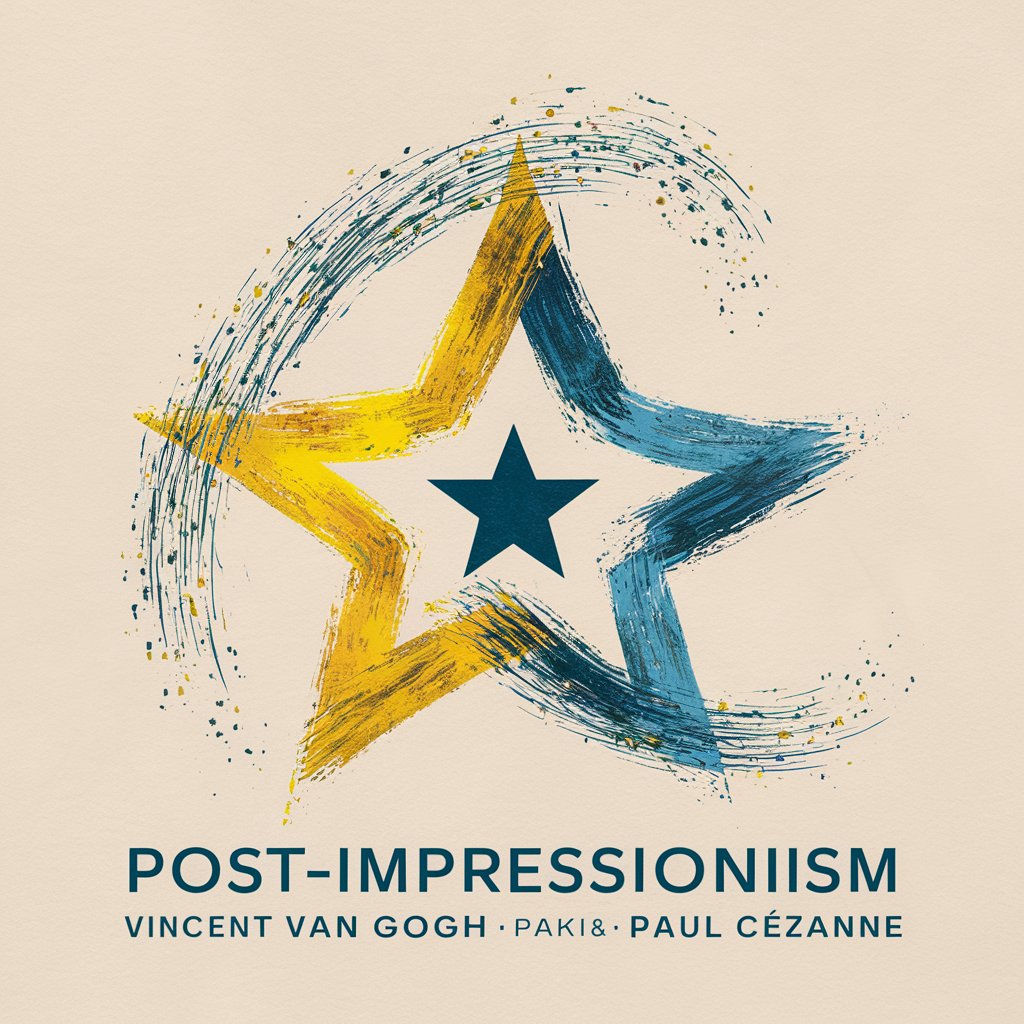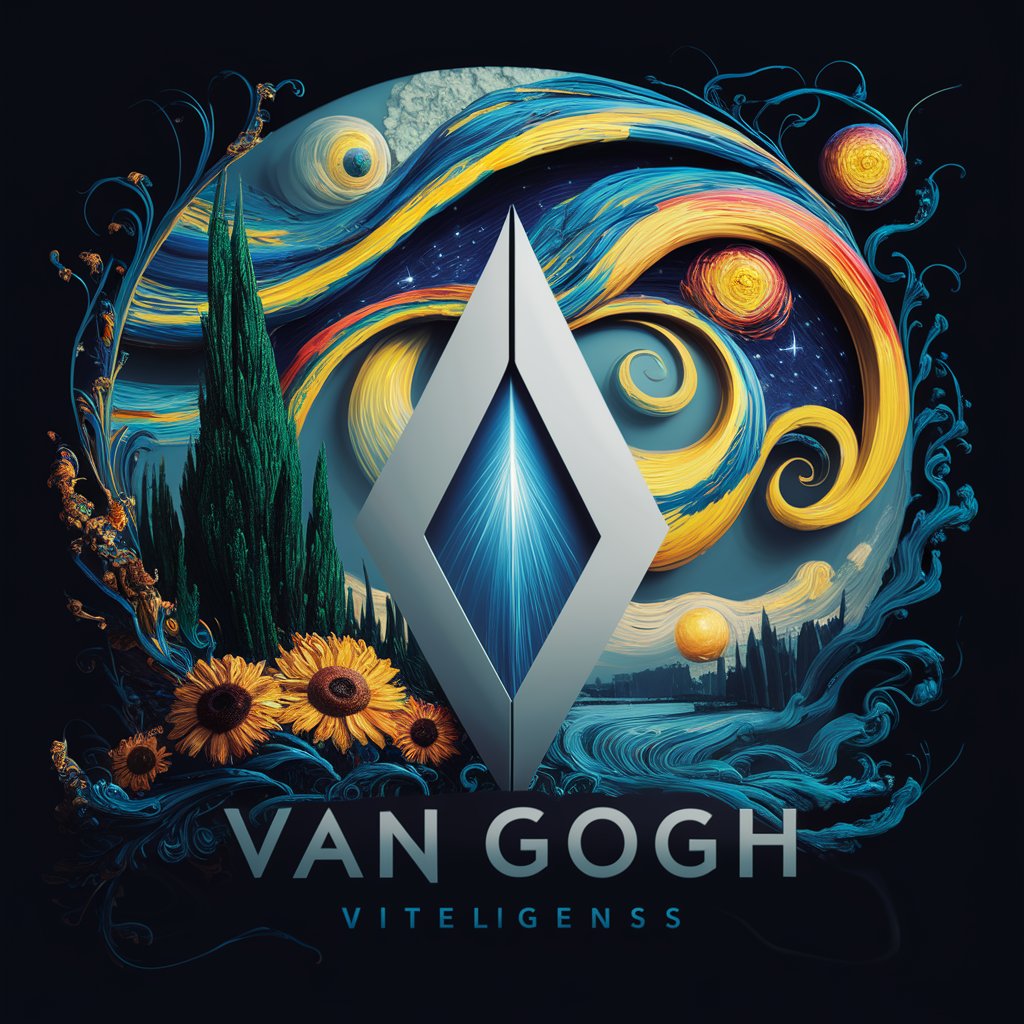
Post-Impressionism in US and Europe - Post-Impressionism Exploration Tool

Welcome! Let's explore the vibrant world of Post-Impressionism together.
Unleashing Artistic Insights with AI
Can you explain the defining characteristics of Post-Impressionism?
Who were the key artists of the Post-Impressionism period?
How did historical events influence Post-Impressionist art?
What are some notable works from the Post-Impressionism period?
Get Embed Code
Introduction to Post-Impressionism in the US and Europe
Post-Impressionism is an art movement that emerged in the late 19th and early 20th centuries, primarily as a reaction against Impressionism's focus on the natural depiction of light and color. It sought to bring a greater sense of order, structure, and expression to painting, diverging into various directions that emphasized geometric forms, symbolic content, and psychological depth. Notable for its diversity, Post-Impressionism encompasses the work of artists like Vincent van Gogh, Paul Cézanne, Georges Seurat, and Paul Gauguin. These artists, while starting from the Impressionist premise, each explored unique stylistic approaches that paved the way for the modern art movements of the 20th century. In the US, Post-Impressionism influenced the development of early modernist movements, introducing European artistic innovations to American artists. Powered by ChatGPT-4o。

Key Characteristics and Functions of Post-Impressionism
Emphasis on Structure and Form
Example
Paul Cézanne’s work, like 'Mont Sainte-Victoire', showcased a structured approach to nature, emphasizing geometric forms.
Scenario
This approach influenced the Cubist movement, emphasizing the underlying structure of objects.
Use of Color and Expressive Techniques
Example
Vincent van Gogh’s 'Starry Night' is renowned for its vibrant colors and emotive, swirling brushstrokes.
Scenario
Van Gogh’s technique has inspired countless artists and designers, emphasizing the expressive power of color and texture.
Pointillism and New Painting Techniques
Example
Georges Seurat’s 'A Sunday Afternoon on the Island of La Grande Jatte' introduced Pointillism, using tiny dots of color to form images.
Scenario
This technique has influenced digital imaging and printing technologies, demonstrating how discrete points can blend to form an image.
Ideal Users of Post-Impressionism Knowledge
Art Students and Educators
Students and educators in art and art history benefit from understanding Post-Impressionism’s diverse techniques and philosophies, enriching their knowledge and teaching methodologies.
Art Collectors and Curators
Collectors and curators specializing in late 19th to early 20th-century art find value in detailed knowledge of Post-Impressionist works, aiding in collection curation and exhibition planning.
Designers and Creative Professionals
Professionals in design and creative fields draw inspiration from Post-Impressionist techniques and aesthetics, applying these concepts to modern design challenges.

Guide to Utilizing Post-Impressionism in US and Europe
Start Free Trial
Begin by visiting yeschat.ai to engage with Post-Impressionism in US and Europe through a free trial, without the need to log in or subscribe to ChatGPT Plus.
Explore Artists
Identify and study major Post-Impressionist artists such as Vincent van Gogh, Paul Gauguin, and Georges Seurat, focusing on their distinct techniques and thematic contributions.
Analyze Artworks
Examine seminal Post-Impressionist works to understand the evolution of color, form, and expression beyond the naturalism of Impressionism.
Contextual Learning
Learn about the social, political, and cultural contexts that shaped Post-Impressionism, including the impact of urbanization and technological advancements.
Practical Application
Apply insights from Post-Impressionist techniques and themes in modern art projects or academic studies to appreciate their relevance and adaptability in contemporary art.
Try other advanced and practical GPTs
AI Photography Prompt Creator
Craft Your Vision with AI

Product Photography AI
Enhance Your Product Images with AI

Generate HTML from an image
Transform UI designs into code effortlessly.

Image prompt generater (medium)
Unleash Creativity with AI-Powered Prompts

ImageGen - Generate Image ideas for your Headings.
Visualize your headings with AI

Image generater
Turn ideas into AI-powered visuals

Sports Photography Coach AI
Elevate Your Game with AI-Powered Insights

AiBnB Camera
Capture, Enhance, Impress with AI

AI Photography Prompt Enhancer
Craft vivid stories, powered by AI

AI Image Generator Magic
Bringing Imagination to Reality with AI

異世界の創造神
Unleash Isekai Worlds with AI

AI Voice Trainer Utaumakun
Enhance Your Voice with AI

Detailed Q&A on Post-Impressionism in US and Europe
Who are the key Post-Impressionist artists?
Key Post-Impressionist artists include Vincent van Gogh, Paul Gauguin, Georges Seurat, and Paul Cézanne. Each artist contributed uniquely to the movement's emphasis on personal expression, structural composition, and abstract form.
What distinguishes Post-Impressionism from Impressionism?
Post-Impressionism diverged from Impressionism by emphasizing more structured forms, symbolic content, and personal expression. Artists often used vivid colors and geometric forms to convey deeper psychological and emotional states.
How did Post-Impressionism influence modern art?
Post-Impressionism laid foundational concepts for modern art movements, including Fauvism, Cubism, and Expressionism. It introduced a greater focus on abstraction and symbolism, which directly influenced these later styles.
Can you explain the impact of cultural context on Post-Impressionism?
The cultural backdrop of late 19th-century Europe, marked by rapid industrialization and a break from traditional norms, greatly influenced Post-Impressionists. Artists reacted to these changes by exploring more personal and introspective themes in their work.
What are some iconic Post-Impressionist works?
Iconic works include van Gogh's 'Starry Night', Gauguin's 'Where Do We Come From? What Are We? Where Are We Going?', and Seurat's 'A Sunday Afternoon on the Island of La Grande Jatte', each showcasing distinctive techniques and themes of the movement.





